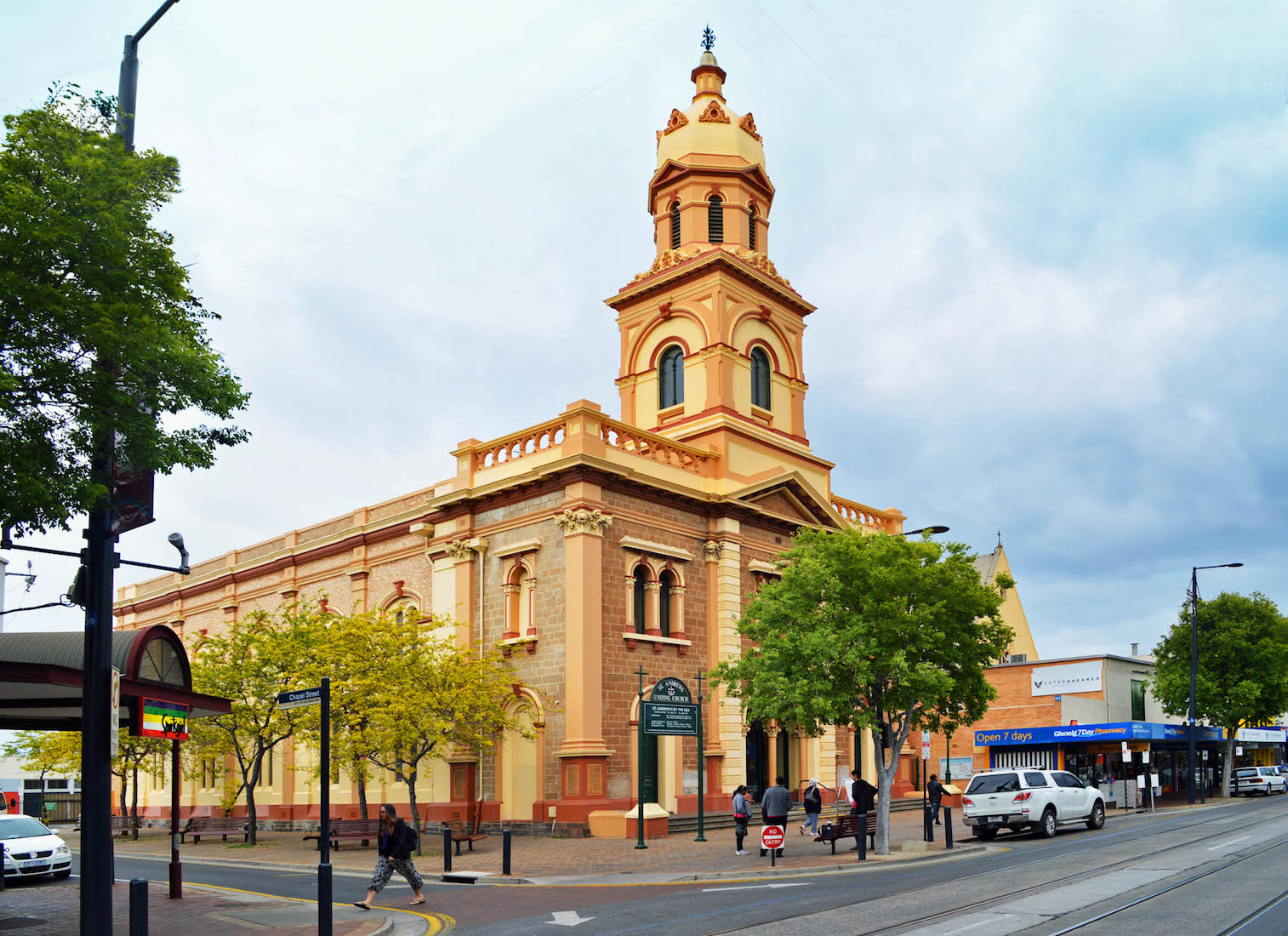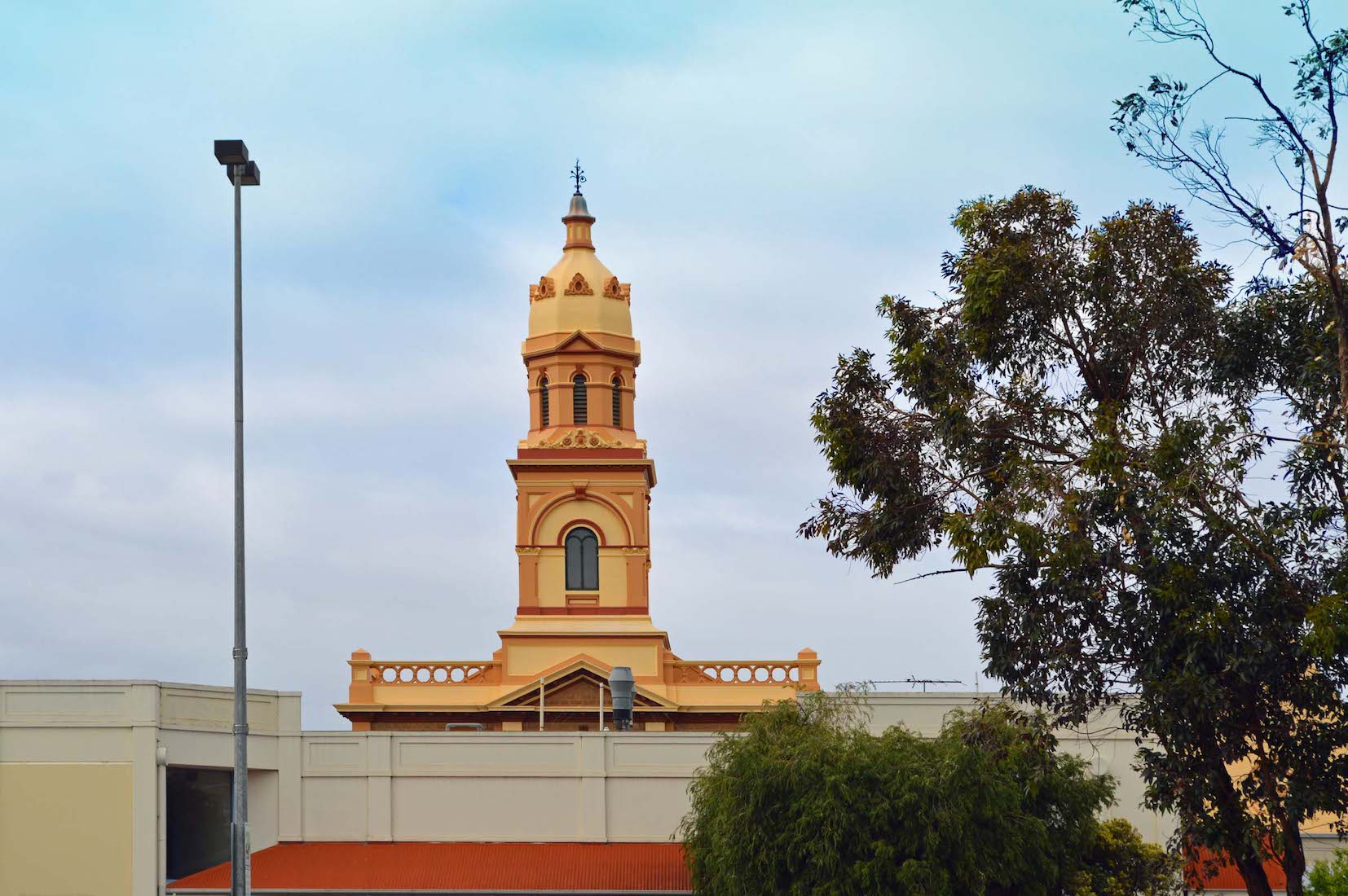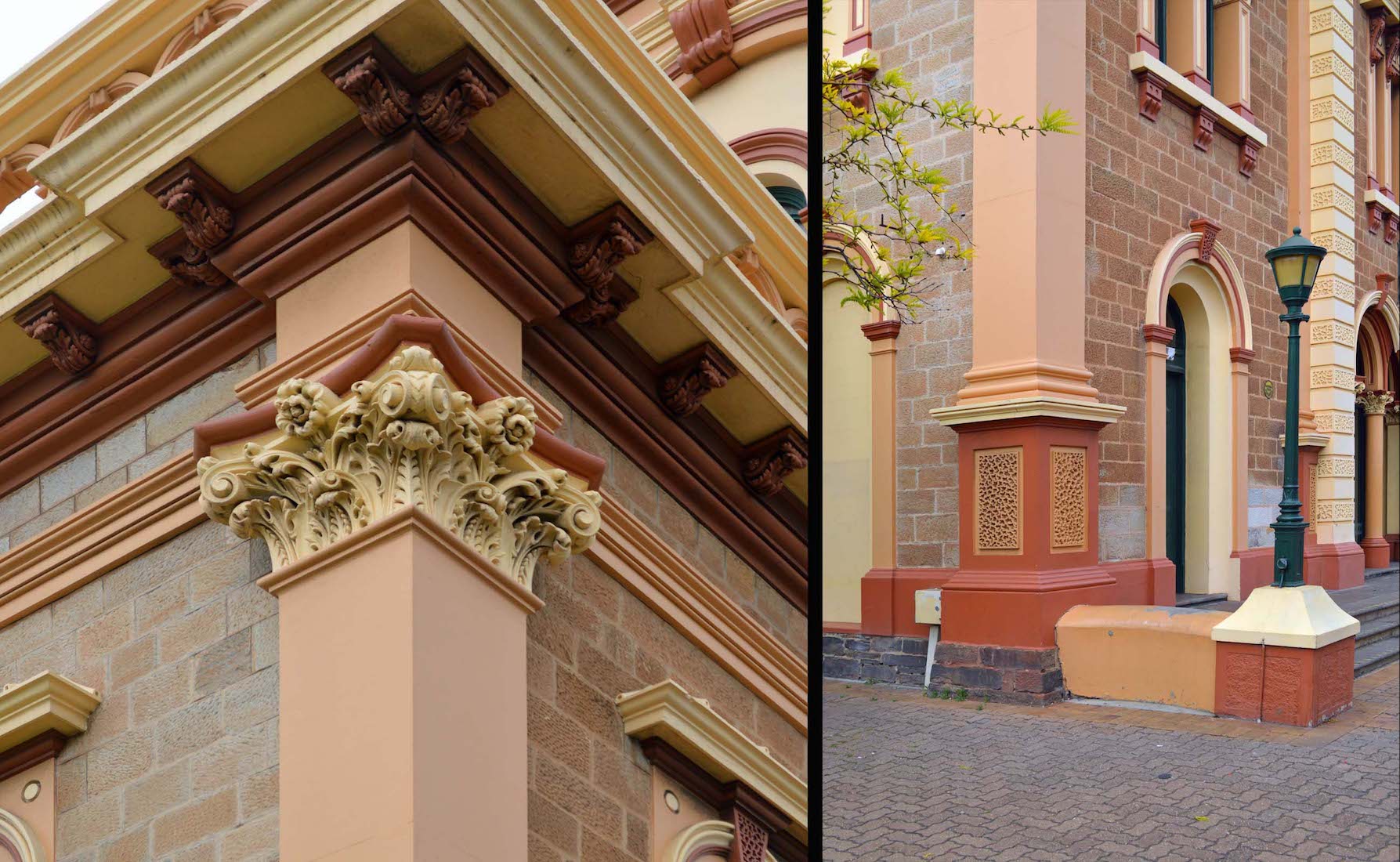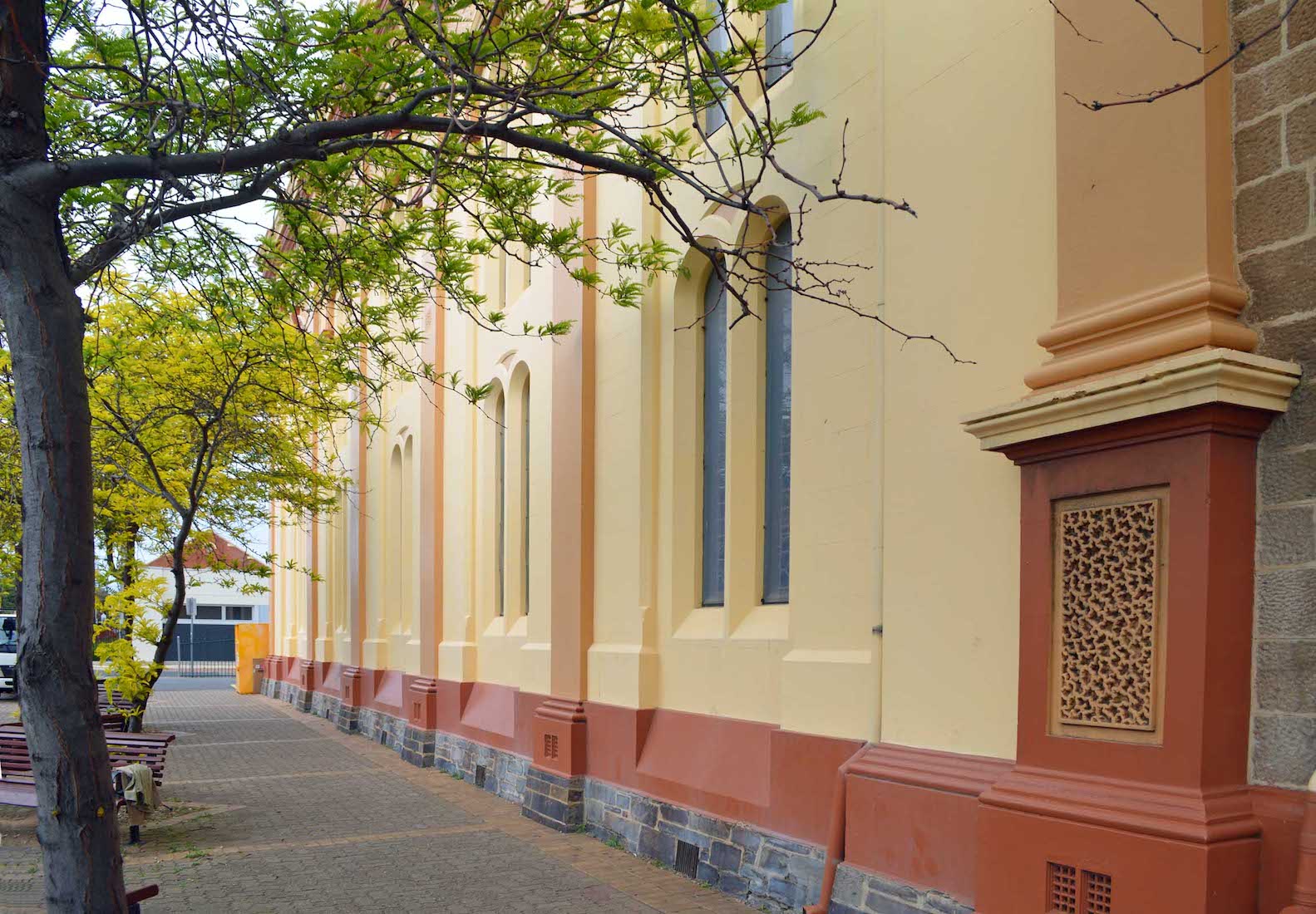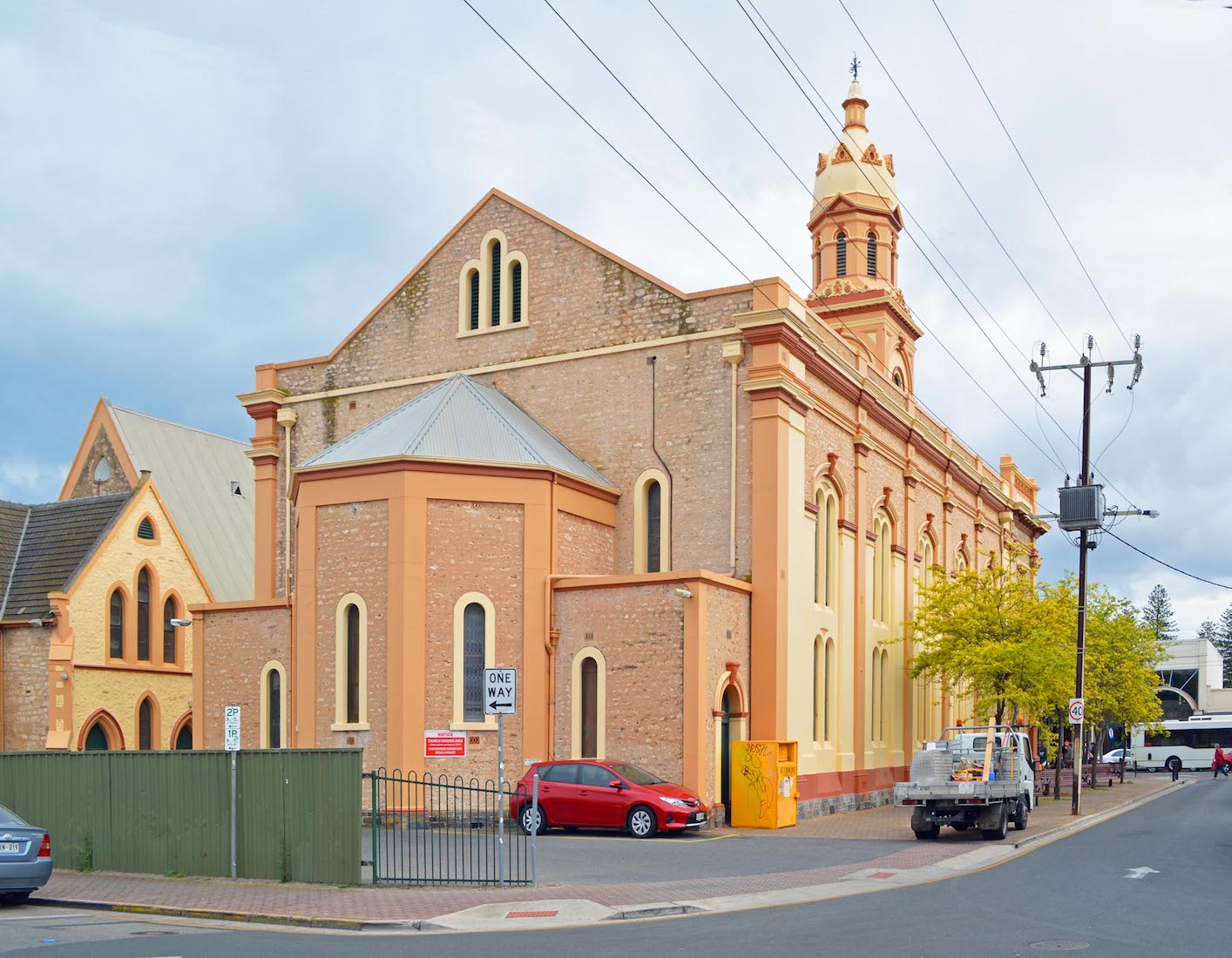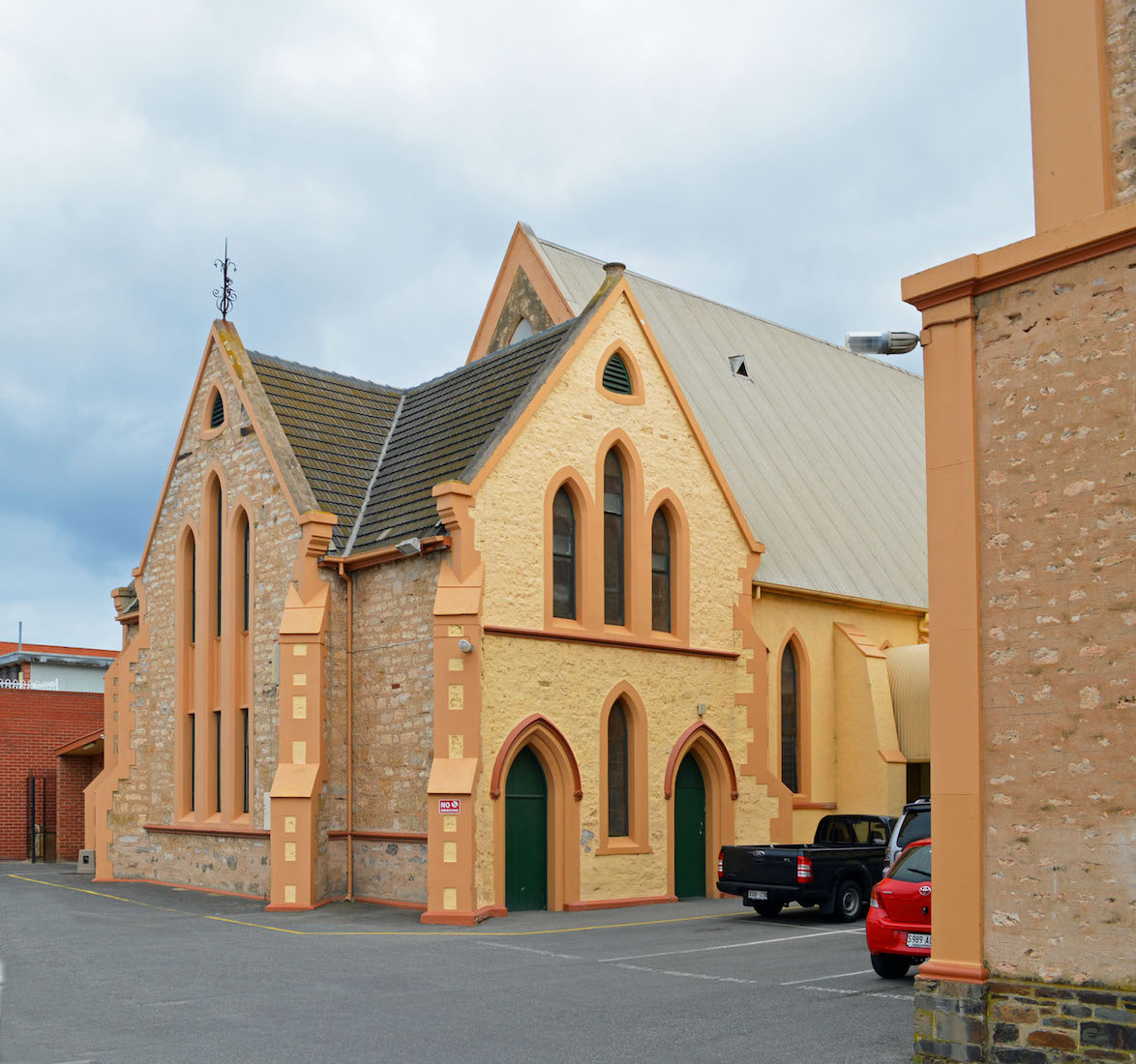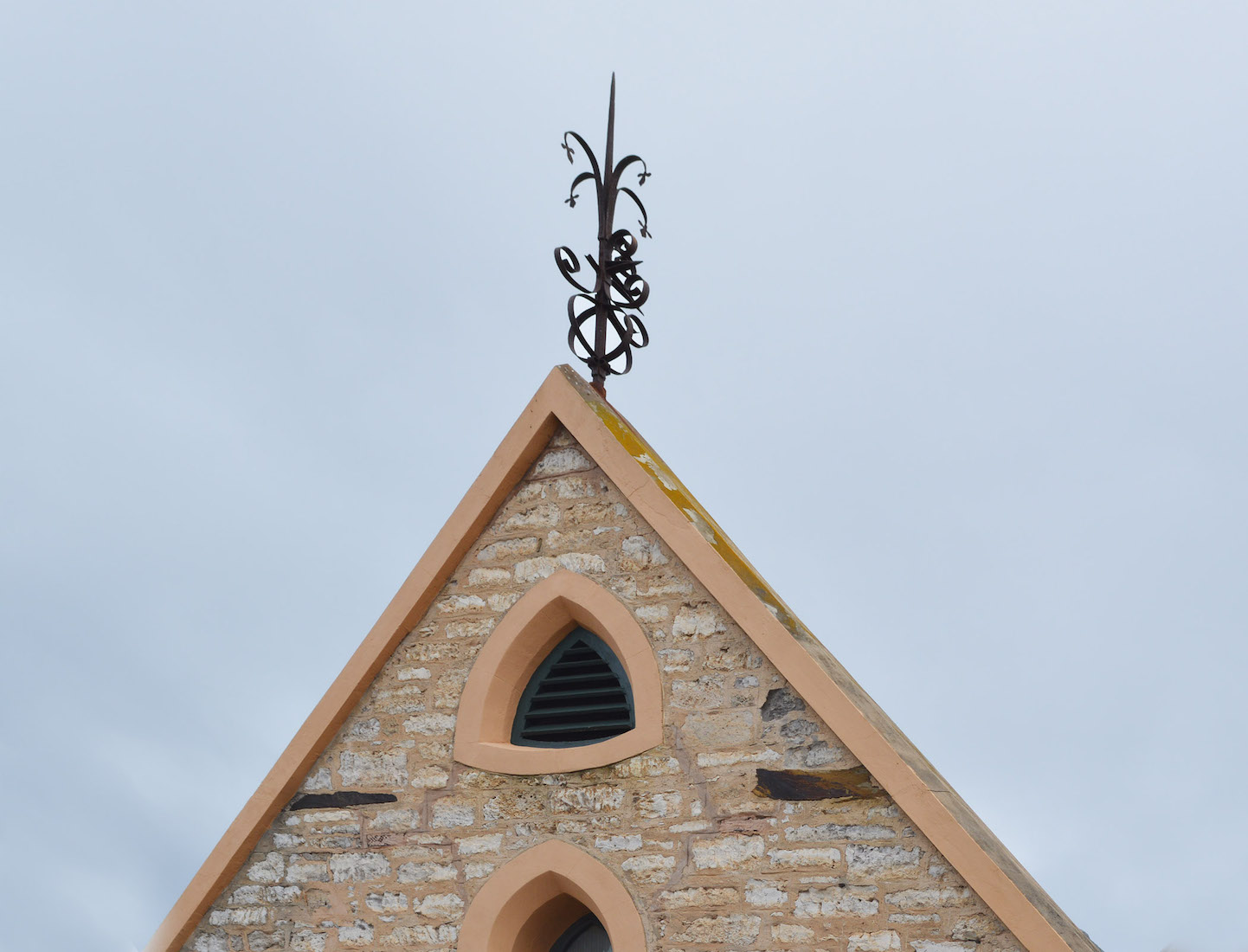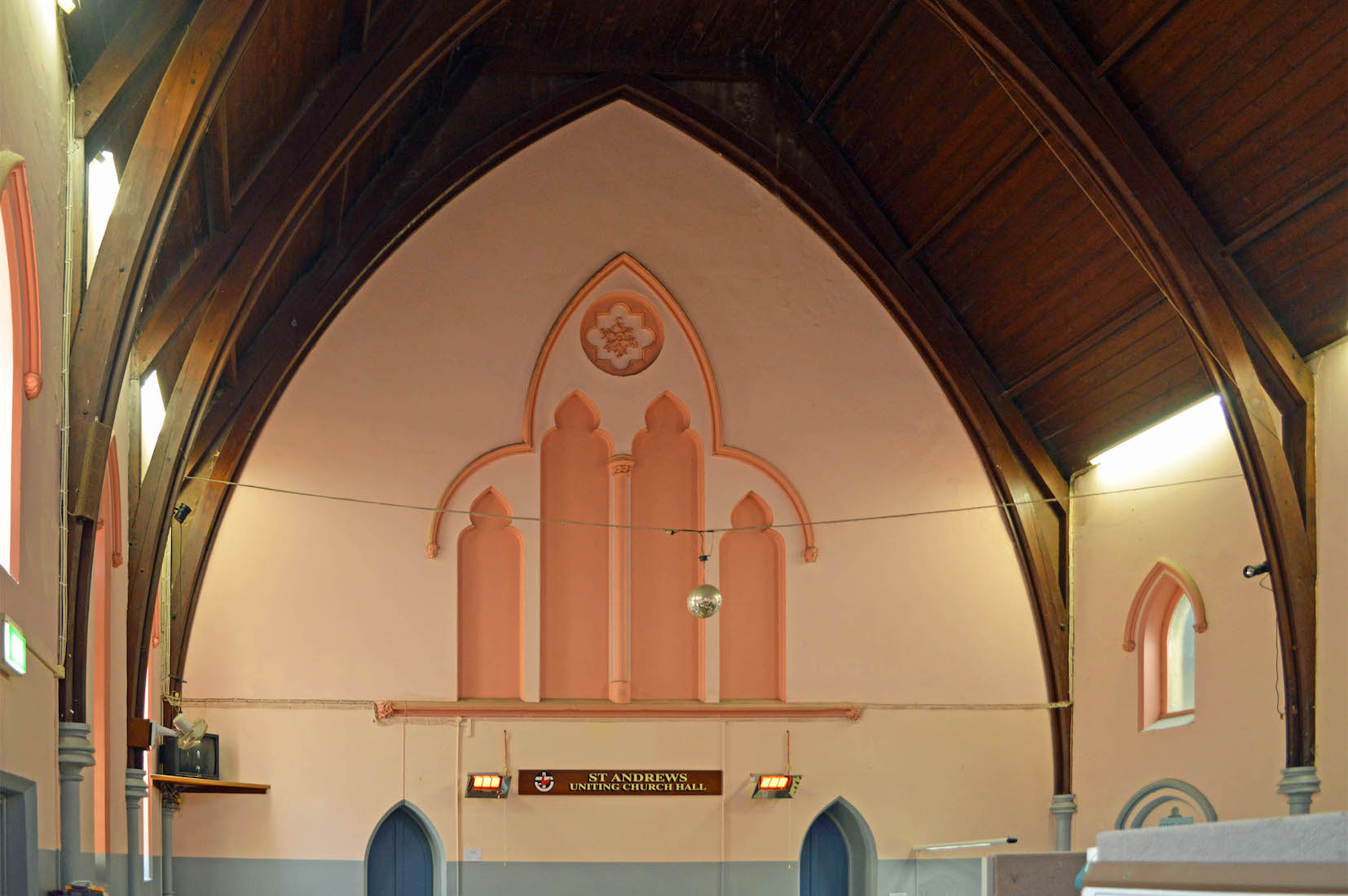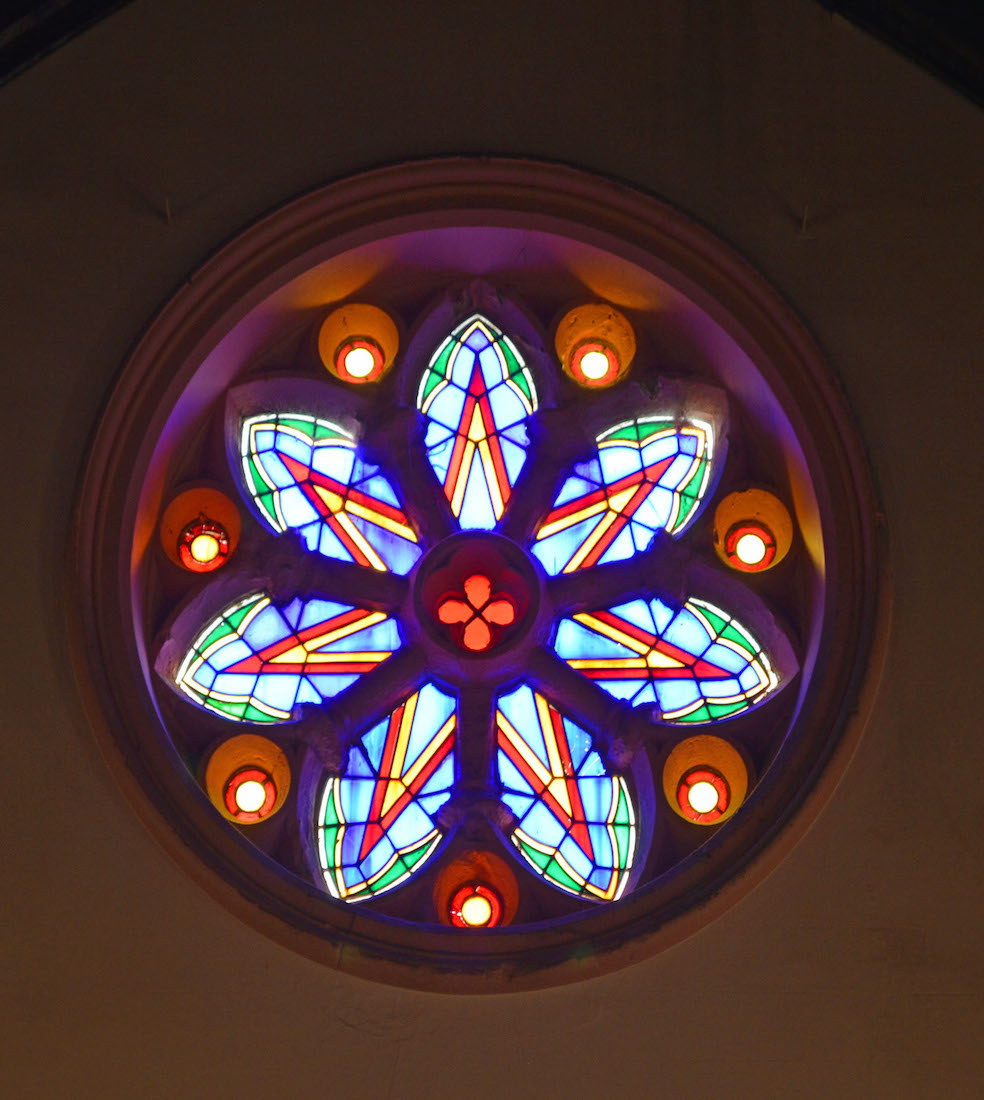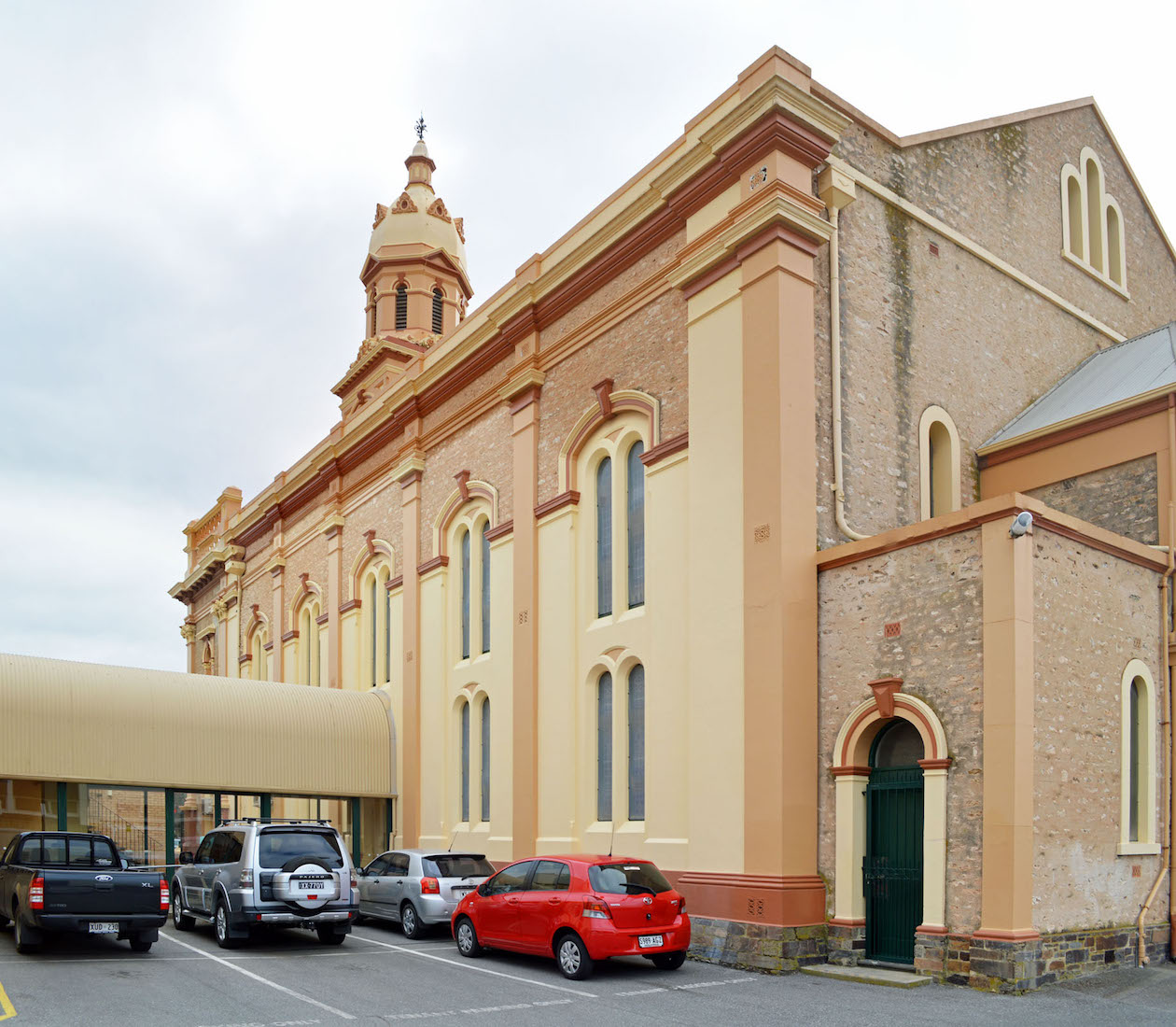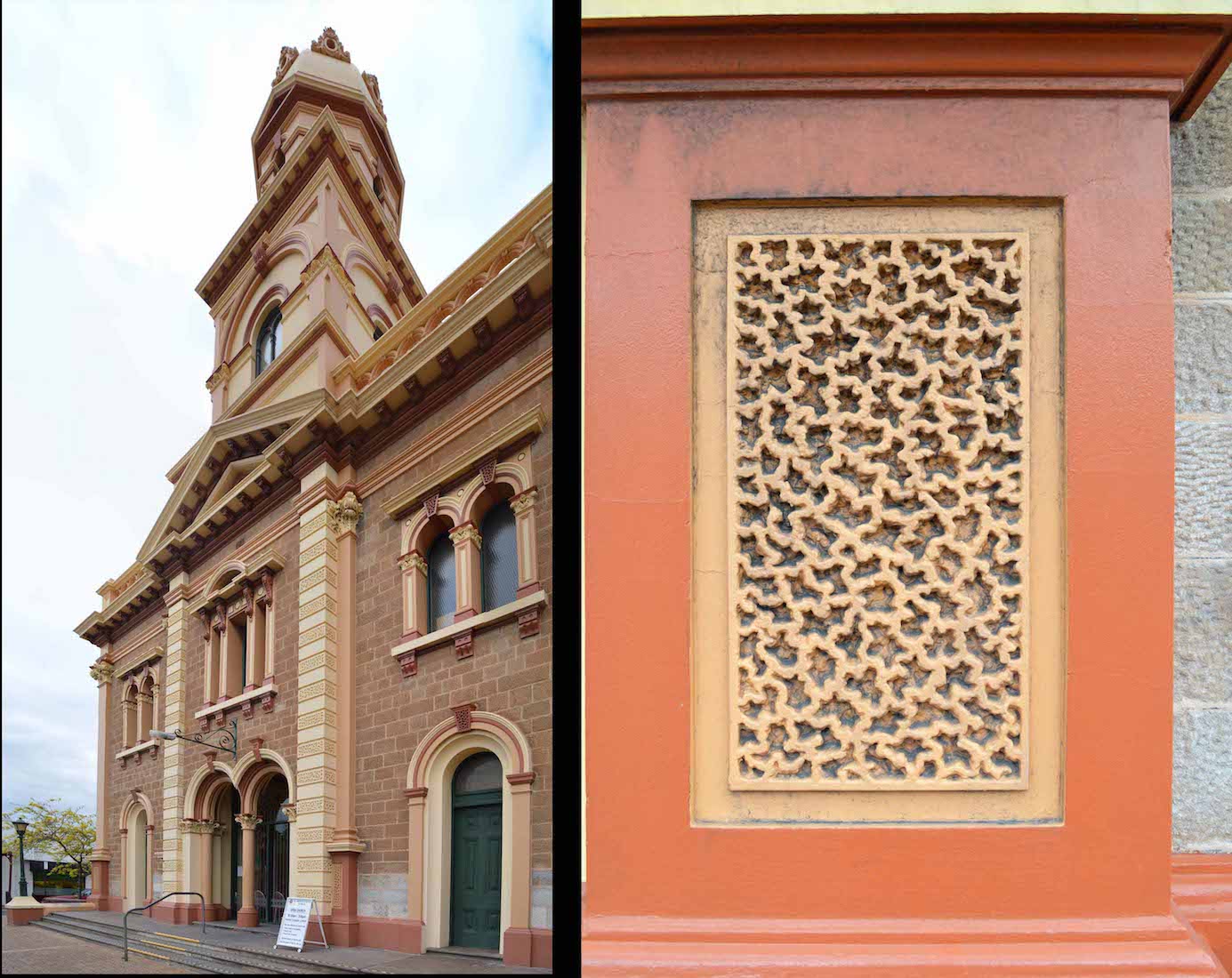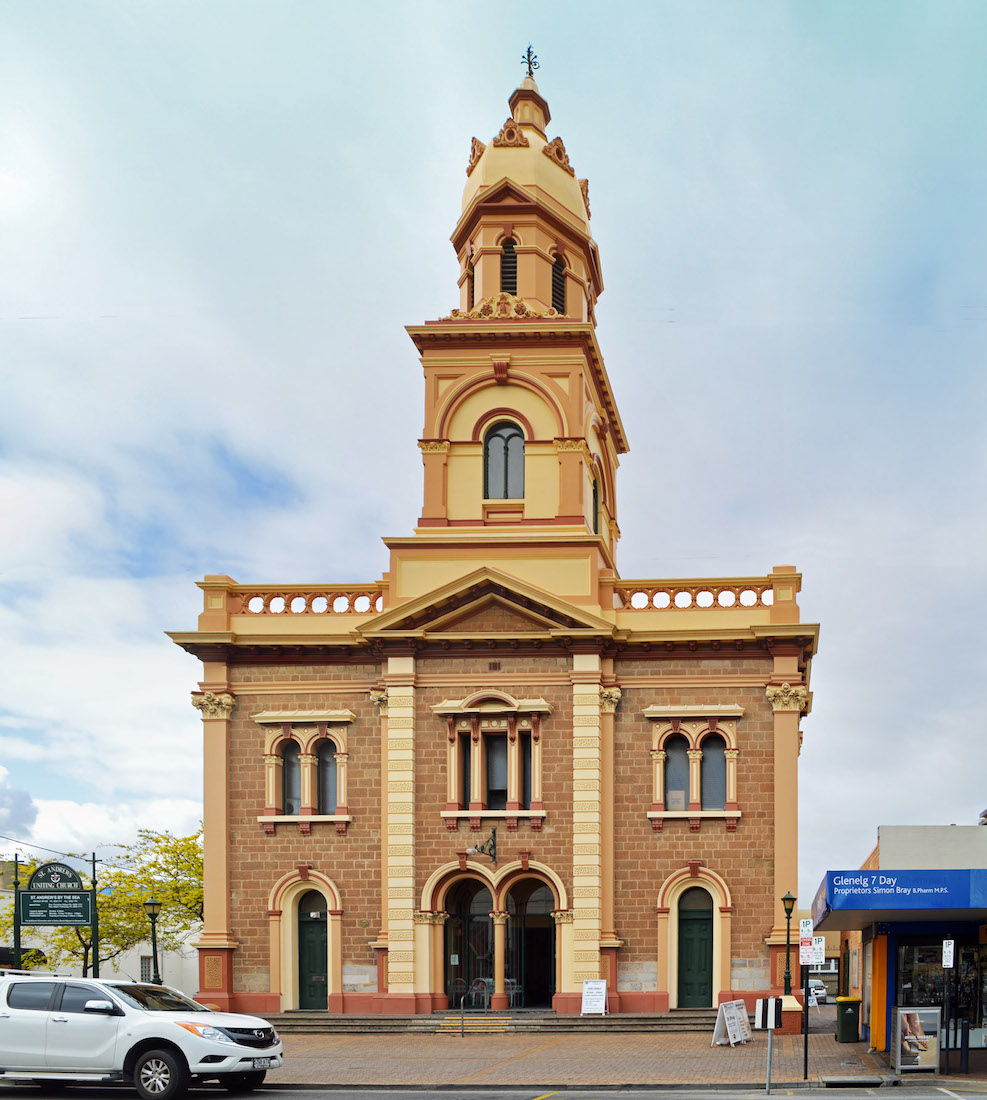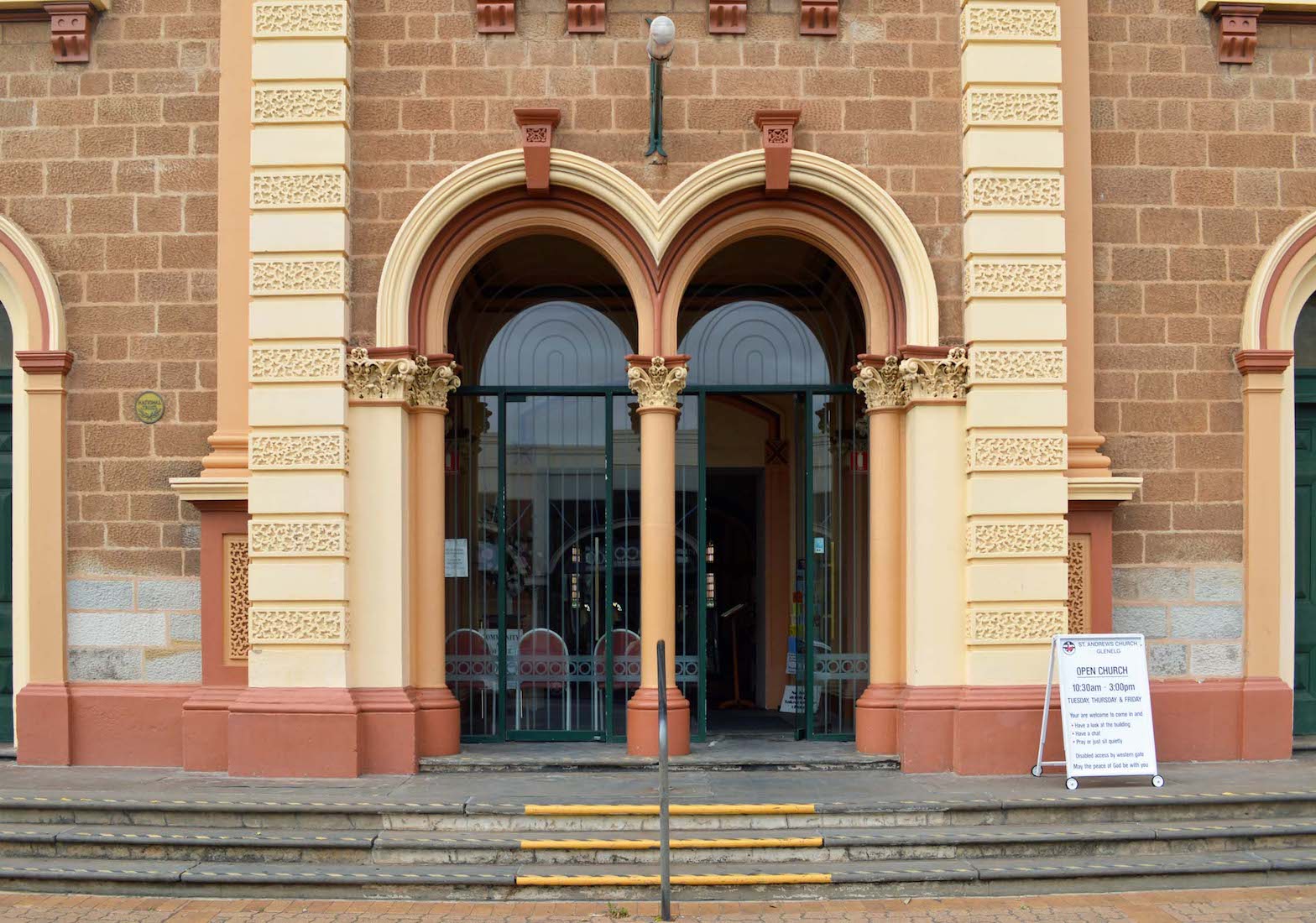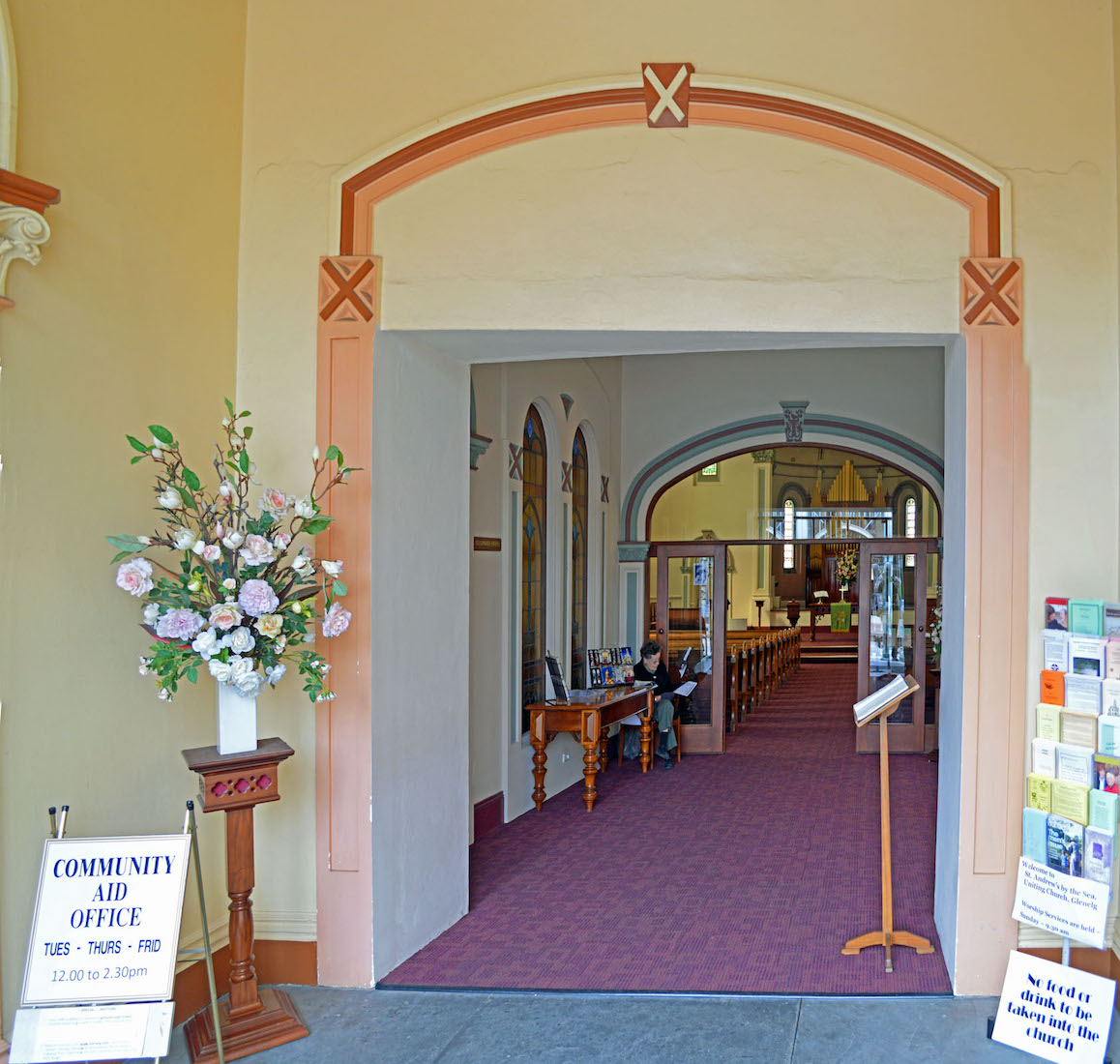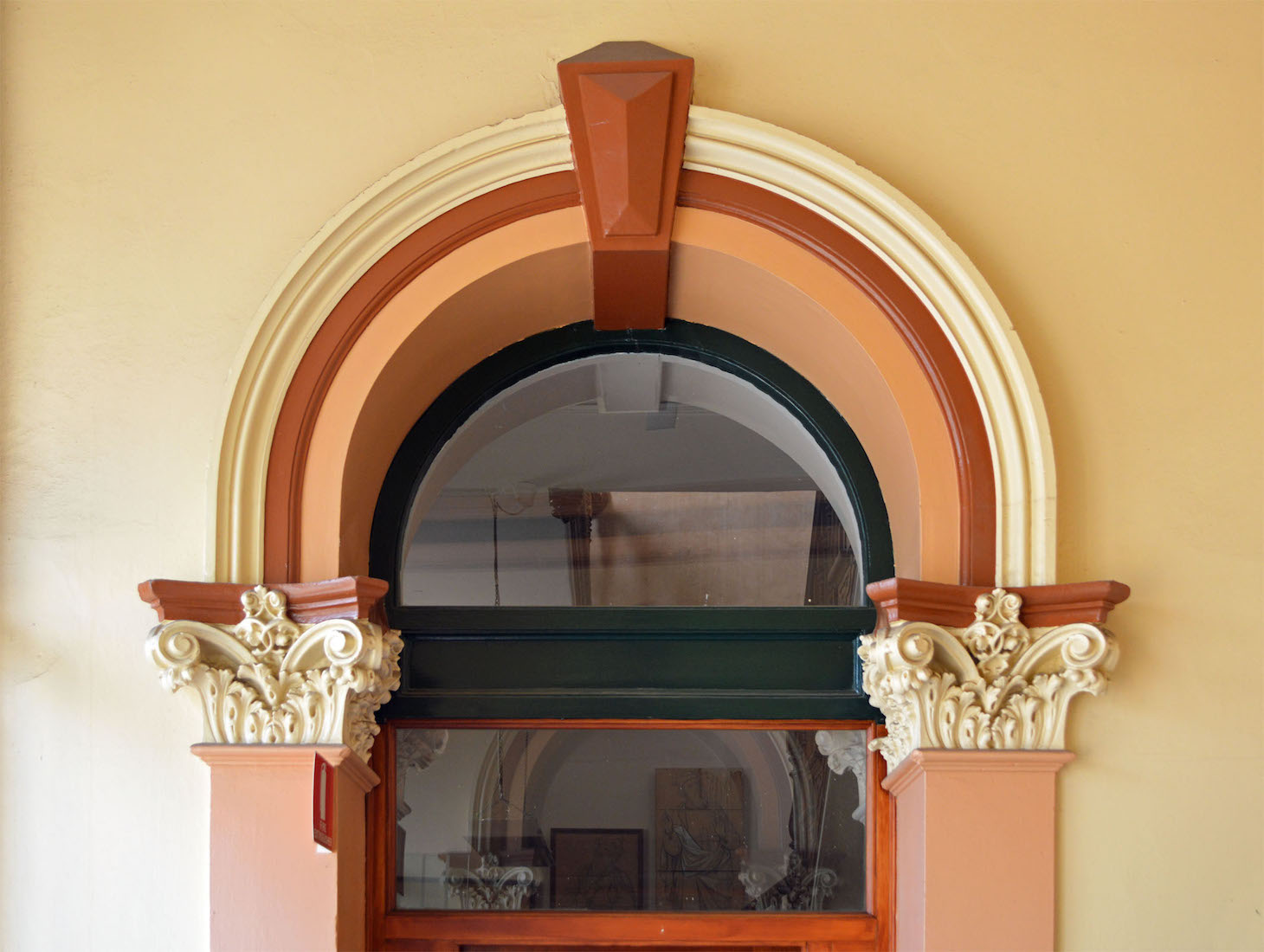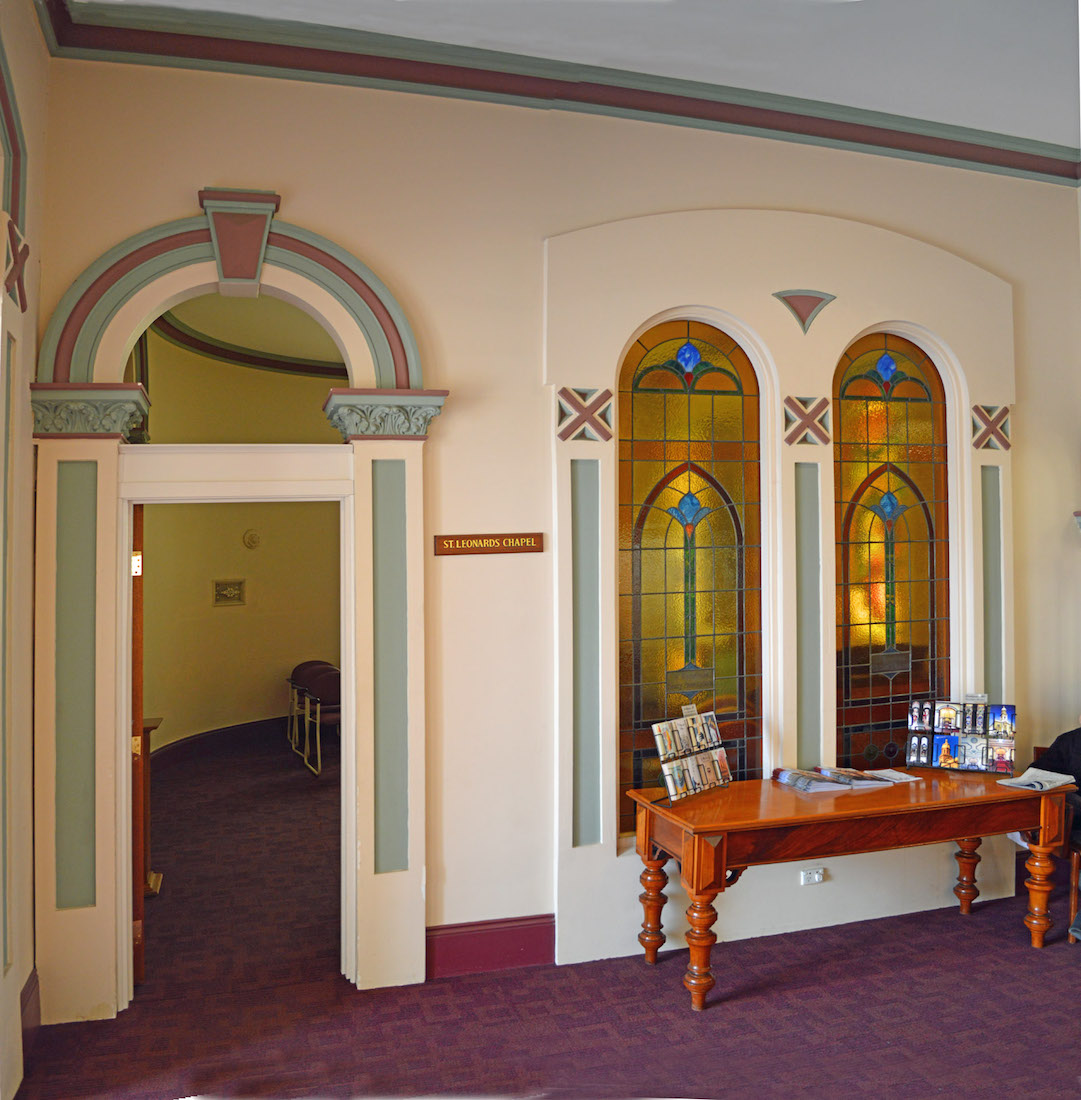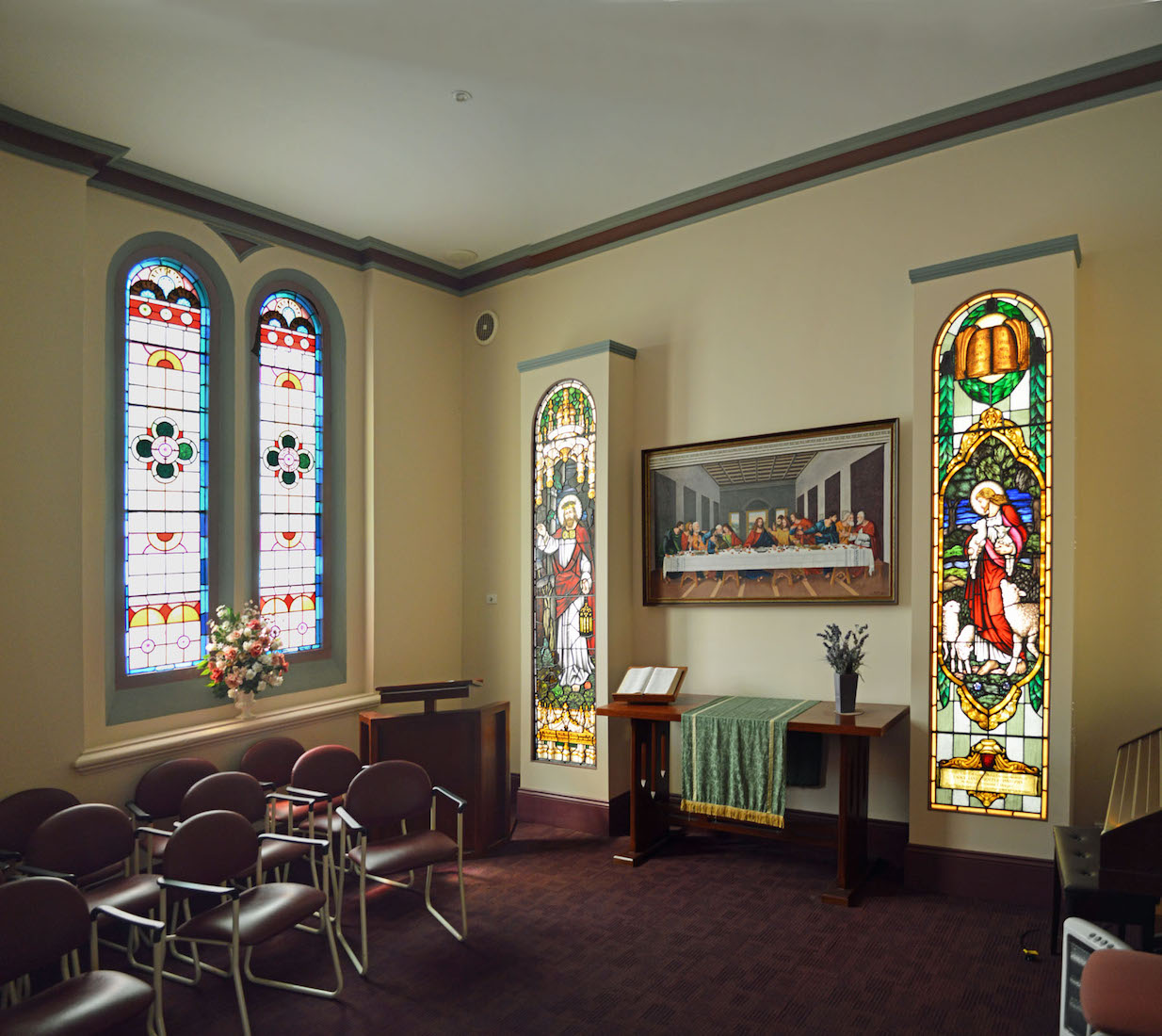2. SATELLITE VIEW
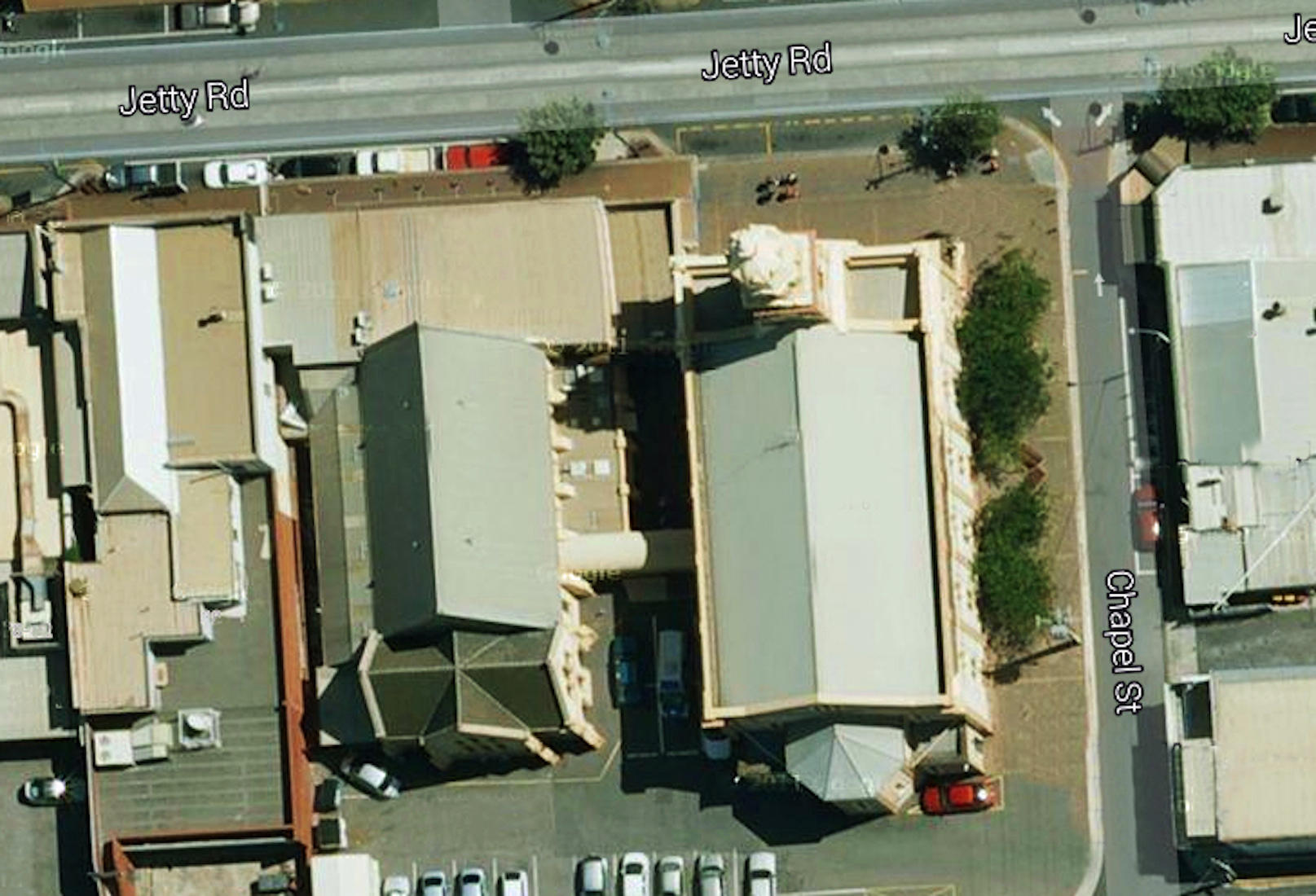
The Church is entered from the south side of Jetty Road and is on the corner with Chapel Street. It is linked to the Parish Hall at left. On this website, as usual we shall use liturgical directions, using East (with a capital letter) to denote the sanctuary end – although geographically this is slightly east of south! This means that strangers can easily orient themselves without knowing the exact situation – even though it may exasperate the locals! My apologies ... .
3. THE TOWER
The distinctive tower is a landmark feature, easily recognizable from a distance. It is claimed that the tower has been used by seamen for coastal navigation.
4. TOWER DETAIL
Any visitor is struck by the loving care and attention that has been lavished on this building. It seems likely that this tower might have been the home of at least one bell, but I can find no reference to this.
5. COLUMN DECORATIONS
The building has many examples of fine craftsmanship and detailing. How different from the bland plainness of many of today’s structures!
6. NORTH WALL
The foundation stone of this building was laid in 1879. The Church is 80 feet long and 50 feet wide, with an average of 32 feet to the ceiling.
7. NORTH EAST ASPECT
Compared with the front façade, the East wall is relatively plain. The semi-octagonal sanctuary apse is flanked by two vestries. The higher windows on either side of the apse can be seen from the main area; the top windows just give light to the gable space above the ceiling.
8. PARISH HALL
In 1848 a small, very plain building was erected and opened in Smith Terrace (now Gordon Street), Glenelg. In 1859 a new church was opened for divine worship, although in an unfinished state. This building is now the Church Hall – the graceful building shown here.
9. HALL FINIAL
The attention to detail was evident in those early years, as shown by this elaborate finial on the Hall gable.
10. HALL INTERIOR
The Parish Hall is now occupied by the Friendship Café and an Opportunity (‘Op’) Shop. The Café has been operating since 1965.
11. HALL ROSE WINDOW
The Hall has a high Rose Window featuring a seven-pointed star. We observe that the Commonwealth (or Federation) Star also has seven points, but this was much later, in 1901. More likely, this star reflects the belief that 7 is ‘the perfect number’ which occurs frequently in Scripture.
12. THE SOUTH WALL
Leaving the Hall, we now come to the South wall of the Church, and the link across to the Hall. The top row of windows on this wall have clear glass, giving light to the building; the lower row have various degrees of ornamentation.
13. LARGE AND SMALL
From the South West corner there is a view of the West wall. The Church is open to visitors every day – for viewing, counselling or prayer. The bases of the front corner columns are decorated with this intricate pattern – a design common to buildings of this era.
14. WEST WALL
The external front is described as being in the Italian style and of the Corinthian order ... . Very smart! The original Mintaro slate steps are still in use. In 1977 the name ‘Jetty Road Uniting Church’ was adopted. In 1999 the name was changed to ‘St Andrew’s by the Sea Uniting Church’.
16. FRONT PORCH
The main doors lead into a small porch which in turn leads to a short hallway. In a cathedral, one of these would be called the ‘narthex’, but I suspect that term is not used here! The doorway designs are the St Andrew’s cross. In the flag of Scotland this appears as a white cross on a blue background. According to legend, the Christian apostle and martyr Saint Andrew, the patron saint of Scotland, was crucified on an X-shaped cross at Patras, in Achaea.
17. DECORATED ARCH
To the left of our entry is a doorway through to a non public area. The side columns have decorated capitals, and there is a large ornamental keystone at the apex.
18. CAPITAL DETAIL
Here is the delightfully carved capital in detail. We get twice the value with the reflection!
19. ST LEONARD’S CHAPEL
Moving in through the arch towards the Church, St Leonard’s Chapel is on our left. Leonard was supposedly a Frankish noble who was converted to Christianity. Leonard was given the right to liberate prisoners whom he would find worthy of it, at any time. Leonard secured the release of a number of prisoners, for whom he has become a patron saint. The name occurs here because St Leonard’s was a suburb of Glenelg, and the name of one of the churches which united to form St Andrew’s.
20. CHAPEL VIEW
The final service of St Leonard’s Uniting Church (originally St Leonard’s Methodist Church) was held in 1989. Two stained glass windows (left) from this church were included in the Chapel during the refurbishment of St Andrew’s in 1992.


